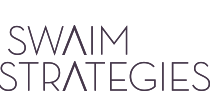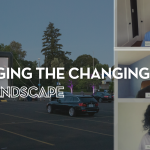Marketing Your Next Event: 4 Tips You Need
COVID-19 has rocked the nonprofit world. Not only has it radically changed the way that nonprofit offices operate, but it’s driven thousands of organizations to turn to hybrid or virtual event strategies for donor engagement for the first time.
Yet even as the pandemic evolves and physical gatherings become more common, it looks like hybrid events are here to stay. This is a transition that’s still challenging for many nonprofits, as staff members adjust to new event technologies. However, no matter how well your own organization may be adapting to the digital challenge, even the most well-planned events can fall short of their goals if not backed up with solid promotion strategies.
In order to brave the changing landscape of fundraising events, your organization needs to do more than just adopt virtual event strategies. An effective marketing campaign will allow you to boost attendance and support for your next event, whether it be virtual, hybrid, or in person.
We suggest that you implement the following marketing essentials:
- Leverage the power of direct mail.
- Revamp your digital marketing with interactive tools.
- Use donor data to personalize your communications.
- Enlist the help of a professional consultant.
Don’t allow our current crisis to get the better of you. With these nonprofit marketing techniques, you can increase the success of your next in-person, virtual, or hybrid event, and take steps to maximize the overall effectiveness of your marketing tools.
1. Leverage the power of direct mail.
There’s no doubt that email, social media, and your other digital marketing channels are essential resources. These tools allow you to expose your brand to a massive audience, automatically track donor engagement metrics, and meet donors on platforms where they spend most of their waking lives.
That being said, so much focus has been put on these new virtual marketing methods that nonprofits are neglecting a powerful, traditional strategy: direct mail.
While direct mail marketing may have fallen out of the spotlight, you shouldn’t underestimate this versatile medium. Direct mail continues to be an incredibly effective channel to engage donors, inspire them to give, and increase event attendance. For example, not only is direct mail an ideal medium to captivate donors with storytelling techniques, but gifts, attached photos, and the letters themselves give donors something tangible to remember your organization by.
On top of that, direct mail generally has a far higher open rate than other digital messaging mediums. Studies show that around 90% of direct mail is opened. By contrast, consider this nonprofit fundraising statistic from 360MatchPro: the average nonprofit email message only has a 25.2% open rate. Even outside of the specific purpose of event promotion, direct mail is so effective in engaging donors that it can function as a powerful fundraising strategy in its own right.
Whether you’re trying to create compelling fundraising appeal letters, event invitations, or post-event thank-you letters, direct mail has the potential to create deeper, more meaningful relationships between your organization and your supporters. Pair traditional mail with your digital marketing strategies to create a powerful multichannel event marketing approach.
2. Revamp your digital marketing with interactive tools.
While most organizations heavily utilize digital marketing, not everyone understands how to maximize its benefits.
In this day and age, it will take more than a simple email to capture your donors’ attention. Do you remember that statistic we mentioned earlier? On average, only around one-fourth of nonprofit emails are opened. To keep your own virtual event promotions from ending up in the trash folder, you will need to break the mold and make your marketing materials exceptionally engaging.
Consider these interactive email, social media, and digital marketing optimization strategies to engage your donors:
- Create video content. If photos can spark a high level of engagement, then videos are one of the most effective marketing tools at your disposal. Record and share clips of your supporters, animated event promotions, and full-length commercials to drum up anticipation for your upcoming events. Video storytelling strategies will help to capture the impact of your organization’s work and increase engagement both before and during your events.
- Actively engage with other social media users. Too many nonprofit organizations start and stop their social media usage after posting promotional content. Treating your online accounts like collages for your content completely misses the engagement potential of these platforms. Remain active on your different accounts, reaching out to your followers, answering commenters, and collaborating with other users to maximize the reach and influence of your accounts.
- Break out interactive widgets for your newsletters. Each social media platform has its own rules that your team will need to follow to create engaging content. But for your email newsletters, there are a wealth of different widgets and features that can turn your marketing materials into an interactive experience. Animations, surveys, and games can all be embedded into your emails so that donors can play and interact with your content in new and exciting ways.
Following these strategies will make your digital marketing content more entertaining and engaging, and thereby help to increase attendance for your virtual events.
In particular, your email communications should see a higher click-through rate and a drop in non-openers. Pay close attention to these metrics, as well as comparable KPIs on your different social media accounts, to gauge the effectiveness of your campaigns.
3. Use donor data to personalize your communications.
“To whom it may concern” is a poor start to any message to donors. Your supporters are far less likely to be persuaded by appeals or invitations that feel mass-marketed. Regardless of whether your supporters are receiving an email or a physical invitation, all of your communications should be personalized.
This is especially important now, as attendance and engagement for virtual events has become such a major concern. Luckily, you already have a wealth of data in hand that can be used to personalize and target your messaging. Your donor database is a veritable bank of information on your donors, so actively take advantage of these details:
- Names and personal demographics like donor age, gender, and career field can help to tailor your appeals and event invitations to the needs and interests of each donor.
- Contact information and preferred communication channel will ensure that you reach donors and engage them through the proper channels.
- Giving history, such as gift size and frequency of giving allow you to adjust your fundraising appeals and send events appropriate to their level of giving. For example, while some events are open to everyone, a gala may be best targeted to major donors and prospects.
- Engagement history, including past event attendance, volunteer hours, and years of involvement, will all affect how you approach a donor with different programs, events, and opportunities.
- Survey and poll responses can offer deeper insights into donors’ personal opinions, interests, and feelings about your organization and the events you have shared with them.
Segment your supporters by these metrics to send them invitations and event promotions they would be more likely to read. You could even begin your event planning by working off of this data, creating engaging hybrid and virtual event ideas based on your supporters’ interests.
4. Enlist the help of a professional consultant.
While all of these strategies can increase the performance of your events, your team may be looking for more help to put these methods into action or to build a robust marketing infrastructure for the first time.
For more guidance implementing these techniques and refining your event marketing plans, a professional fundraising or marketing consultant could be your best resource.
These professionals are experts in the field of nonprofit promotion and revenue expansion. Not only can they seamlessly incorporate the strategies we’ve discussed in this article, but they can also help you in dozens of other ways. Here are just a few of the many areas of expertise you might find in a full-service, professional fundraising firm:
- Website design and conversion optimization
- Integrated marketing strategies
- Direct mail and print marketing optimization
- Data analysis and roadmapping
- Predictive modeling tools
- Disaster response fundraising
If you’re interested in learning more about the services offered by a consulting agency, this Meyer Partners guide to professional fundraising consultants not only expands on the various services they provide, but also lists top firms to get you started on your search.
Our current crisis has made it more important than ever to have an effective event marketing strategy. With our engagement landscape in constant flux and virtual, hybrid, and in-person events all becoming essential elements of the donor experience, a robust marketing technique is what will help to ensure the success of your events, no matter their format.
These tips will not only help you to strengthen your COVID-era marketing campaigns, but they will allow you to emerge from the pandemic and our new event landscape with a more effective strategy than ever before.
About the Author
Bonnie Meyer
Bonnie brings to her role at Meyer Partners more than 30 years of fundraising experience, with a special emphasis in multimedia approaches to new donor acquisition and development. Her expertise encompasses several facets of direct response fundraising, including copy writing and creative direction, market research, strategic planning, and comprehensive results analysis.







